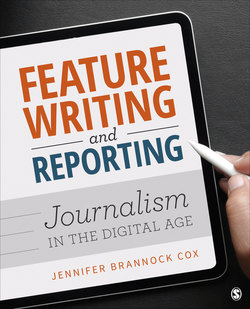Читать книгу Feature Writing and Reporting - Jennifer Brannock Cox - Страница 34
На сайте Литреса книга снята с продажи.
Objectivity Obsolete?
ОглавлениеThe gatekeeping process does not end with story selection. Reporters choose sources for their stories, choose what quotes and information from those sources to include (and exclude) and order the information based on their own judgments of what is most important for readers to know. As a result, reporters are often accused of compromising their objectivity—the practice of portraying news in a completely neutral, unbiased way.
Media scholars have declared the idea of objectivity to be flawed for decades. Researchers Pamela J. Shoemaker and Stephen D. Reese12 argued that reporters’ individual influences—their gender, race, upbringing and a number of other factors—make it impossible for them not to have an opinion. They have a point. Consider this: Would a female journalist write and report a story on equal pay for women in sports differently than a man? Would a black journalist approach a story on racial discrimination in standardized testing differently than a white reporter? They almost certainly would, but that is not necessarily a bad thing. Journalists with backgrounds similar to their sources might be able to provide unique insight into issues that others could not. But their experience could also result in bias. Other influences, such as the pressure to work under deadlines or cover certain areas, the priorities of the news organization and its owners and even the state of the nation and ideologies of its citizens, are factors that make true objectivity nearly impossible to achieve.
Many journalists are abandoning objectivity as their ideal because they feel it inhibits their ability to tell the truth. Revisions to the Society of Professional Journalists’ Code of Ethics in 2014 included the addition of transparency, a method of reporting in which journalists are up-front with audiences and volunteer information about their reporting process, revealing how and why they chose the sources they did, acknowledging issues they feel are important and disclosing any potential conflicts of interest in their reporting. Transparency is not an excuse for including opinion and bias; it simply means reporters need to evaluate stories on a more human level, acting critically and looking for misinformation or gaps in information that might exist. For example, if a source tells a lie, reporters should not be afraid to call attention to the lie and correct it with the truth.
Abandoning objectivity has its risks, which we will explore in greater depth in Chapter 5 on ethics. But journalists can use new feature storytelling methods that we will explore throughout this book to challenge sources, seek truth and tell relatable stories for their audiences.
